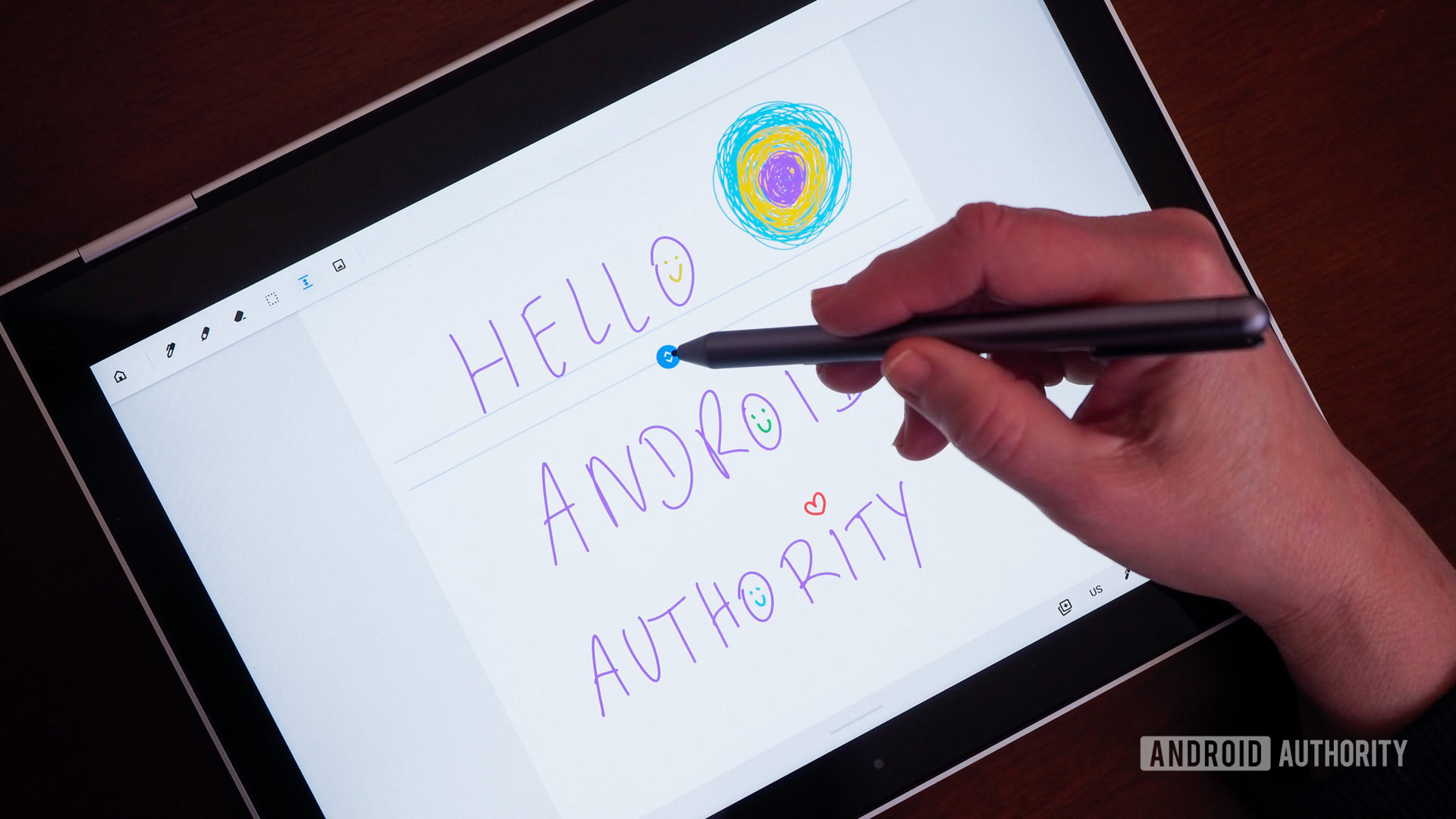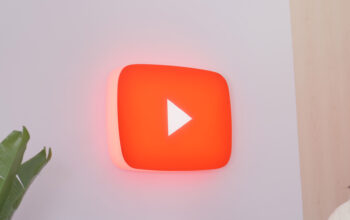Rita El Khoury / Android Authority
I hadn’t intended to buy a Google Pixelbook in 2017. I was more or less managing with my sluggish Toshiba Chromebook 2, and paying $999 for a glorified Chrome browser seemed utterly wasteful to me, no matter how refined the hardware looked. But a fantastic deal changed my mind, and so I found myself unboxing Google’s wonderful first-party Chromebook after having it shipped halfway across the globe from the US to Lebanon.
At the time, few people knew what a Chromebook was. To me, an online writer who spent 95% of my working day inside Chrome and WordPress, a Chromebook was the cheapest machine for the job. But the Pixelbook was an exorbitant Chromebook: 8GB of RAM, 128GB of storage, two USB-C ports, an Intel Core i5 processor, and a 3:2 high-resolution display. It was overpowered for the job and overpowered for Chrome OS, but perfect for someone who wanted a future-proof investment.
The Pixelbook was overpowered for my needs and overpowered for Chrome OS, but perfect as a future-proof investment.
And future-proof it’s been. I’d say my Pixelbook had four, maybe five great years. Now, having completed its sixth spin around the sun, the battery life is suffering and it’s starting to feel sluggish, especially when I log into all three of my Google user accounts (one personal, one shared with my husband, and one for work). Having more than 10 open tabs results in general slowness and there’s latency in opening or loading additional tabs. It works, yes, but it’s not as delightfully snappy as it used to be. I have to be cognizant of the resources I’m using or everything slows down to a crawl.
Part of it must be blamed on Chrome itself. The resource-intensive browser is no gift even on a modern machine. And today’s media- and ad-loaded webpages are certainly heavier than 2017’s pages. But I find myself dismissing the sluggish performance because I absolutely love the Pixelbook’s form factor and because no other Chromebook has come close to this sleek, minimalist, and gorgeous design.
Did you ever own a Google Pixelbook?
633 votes
That delightful hardware keeps me coming back
Rita El Khoury / Android Authority
At first glance, there’s nothing phenomenal about the Pixelbook’s slim silver silhouette. Take a closer look, though, and you realize there’s beauty in the completely flat top lid and bottom base, as well as the simple hinges and clean round corners. The Pixelbook looks just as nice when it’s shut closed as when it’s completely unfolded and flipped in tablet mode. I have yet to see another Chromebook achieve that absolute sleekness in both states; the Samsung Chromebook 2 and some ASUS Chromebook Spins have come close, but they’re not “this” sleek.
Six years later, people still think this is a new laptop.
Just a few months ago, while I was working remotely from my in-law’s place for a few days, I got asked by several family members and friends about my hot new computer. I had to explain that it was released in 2017 and is an aging laptop now. Save for the yellowing palm rests, though, there’s no other outward sign of wear and tear. That’s how well this design has aged over the years; it looks just as good and just as modern now as it did back then.
The Pixelbook is also convertible, thin, very light, and easy to carry over a long day despite my back pain. It achieves all of this without sacrificing precious screen estate. Yes, it only has a 12.3-inch display, but the 3:2 aspect ratio gives me as much vertical space to work with as a 16:9 14-inch display (around 17.5cm or 6.89 inches in height). That’s better for browsing, opening two documents or sites side-by-side, or using two Android apps at the same time.
The Pixelbook has the most Apple-like typing and scrolling experience I’ve seen on a non-Apple laptop.
Before getting the Pixelbook, I had used a MacBook for several years and I was a fan of its keyboard and trackpad. They just worked for me. The Toshiba Chromebook 2 didn’t come anywhere near that, so I’d been apprehensive of the Pixelbook. I thought there was no way it could match Apple’s keyboard and trackpad experience. But from the first day, and until this very day, I remain a bit baffled by how close Google got. This is the most Apple-like typing and scrolling experience I’ve ever seen on a non-Apple laptop, and I mean that as an absolute compliment.
Edgar Cervantes / Android Authority
This similarity eases my transition between my stationary iMac and my on-the-go Pixelbook. I don’t have to adjust the way I type, scroll, swipe, click, tap, drag, or anything. The trackpad’s friction, speed, and accuracy are essentially the same as the Magic Trackpad. The keyboard’s key travel, feel, and spacing are also the same as the Magic Keyboard. I realize that may not be an advantage for anyone who uses mechanical keyboards or mice all day, but for me, it’s an irrefutable leg up any other competing laptops — save Apple’s, of course.
Chrome OS keeps getting better

Rita El Khoury / Android Authority
Cursive
While Chrome OS started as nothing more than a Chrome browser and a file manager, the operating system has tremendously improved over the years. Especially in the last few, if you ask me.
For a couple of years, complacency got the best of me and I stopped looking for or testing new features in it. I just opened Chrome, browsed, did what I had to do, and closed it down. Then, back in 2022, I took a bit of time to delve into everything that was new and that’s when I fell back in love with Chrome OS.
In the last few years, Google has added a PDF viewer and editor, Google Photos-like photo and video editing capabilities, a note-taking application with gesture support, a drawing and doodling app with layers, advanced screenshot and screen recording, and much more. There’s even a recycle bin for the file browser now, so I won’t lose a file if I mistakenly delete it. All of these are essential daily features for me. The PDF editor is so easy to use that I now grab my Pixelbook and stylus when I need to sign something, instead of trying to figure out how to do it from my phone or iMac.
Hundreds of new features and better integration with my Android phones have extended the value of my Pixelbook.
Chrome OS and Android’s integration is better than it’s ever been too — so much so that I miss it each time I go back to my iMac. I can see notifications, my recent Chrome tabs, photos I’ve saved or taken, and control my Pixel 7 Pro straight from my Pixelbook. And the new Fast Pair support means I can keep my Pixel Buds Pro in my ears and move from the Pixelbook to my phone to my tablet without pairing or reconnecting.

Rita El Khoury / Android Authority
I’ve even set up my own Google Photos to rotate as wallpapers and screensavers on the Pixelbook, and I can apply an automatically extracted color scheme from each wallpaper to the entire interface, just like Material You on my Android phones.
Speaking of Android, there are more and better apps made for tablets out there now. Thus more and better apps for Chromebooks too. Samsung and Xiaomi’s incessant push with the various Galaxy Tabs and Mi Pads, along with the tablet improvements since Android 12L and the launch of the Pixel Tablet, have rekindled developer interest in larger screens. It’s invaluable to know that many of the services I use every day (Google Docs, Plex, Spotify, YouTube, 1Password) have Android apps that work well offline. That’s a fantastic fallback when I’m disconnected or in a bad reception spot.
Chrome OS has also added support for Linux apps, some Windows app emulation, and Steam support. I’m neither a gamer nor a Microsoft user, so I haven’t run Windows apps on my Pixelbook or played Steam games, but I know that’s a possibility, should I ever need it.
Everything about Chrome OS has taken a gigantic leap since 2017.
Many of these new features aren’t something I ever expected to see on a Chromebook back in 2017. Compared to the version of Chrome OS that my Pixelbook was running when I first bought it, this is a night-and-day difference, and the fact that I can still extract this much value out of it six years later is honestly surprising. I just wish it had a tiny bit more RAM and a more modern processor; I don’t need more.
These days, each time I grab the Pixelbook and start using it, I go through all the feelings. I know I need to upgrade soon, but I have yet to find a worthy successor, and I just wish Google hadn’t completely canned its in-house Chromebook plans. Sadly, if no other worthy contender pops up, I might just call it quits and get a MacBook Air.


